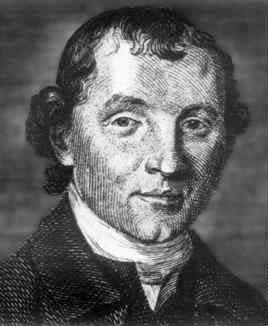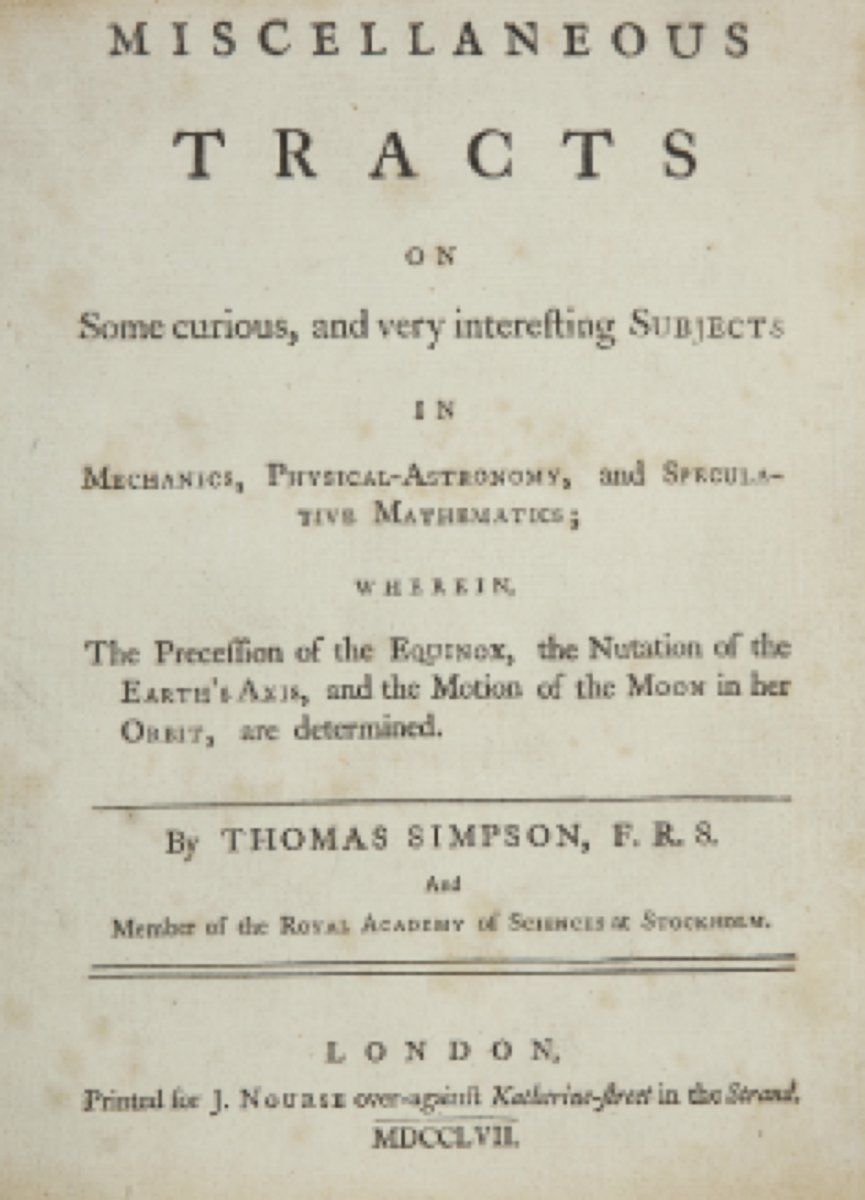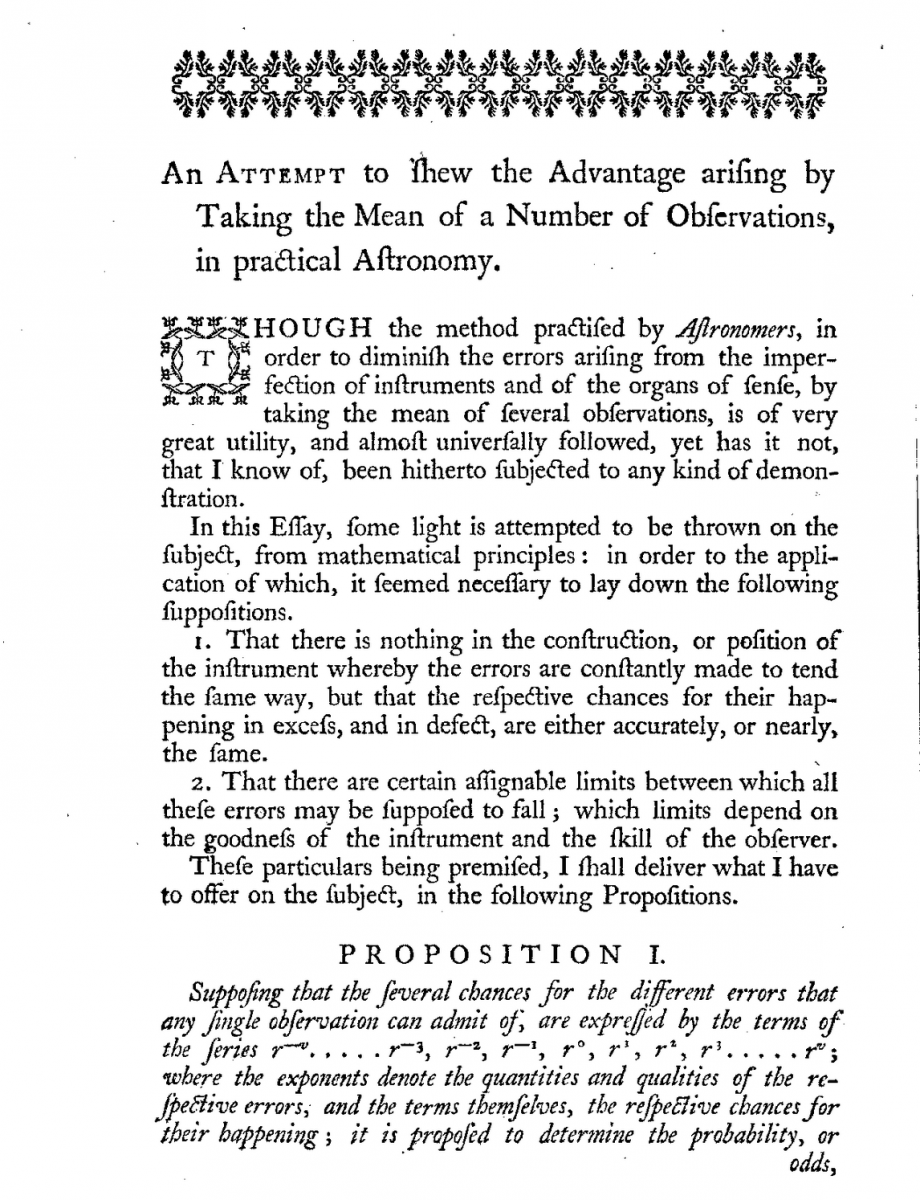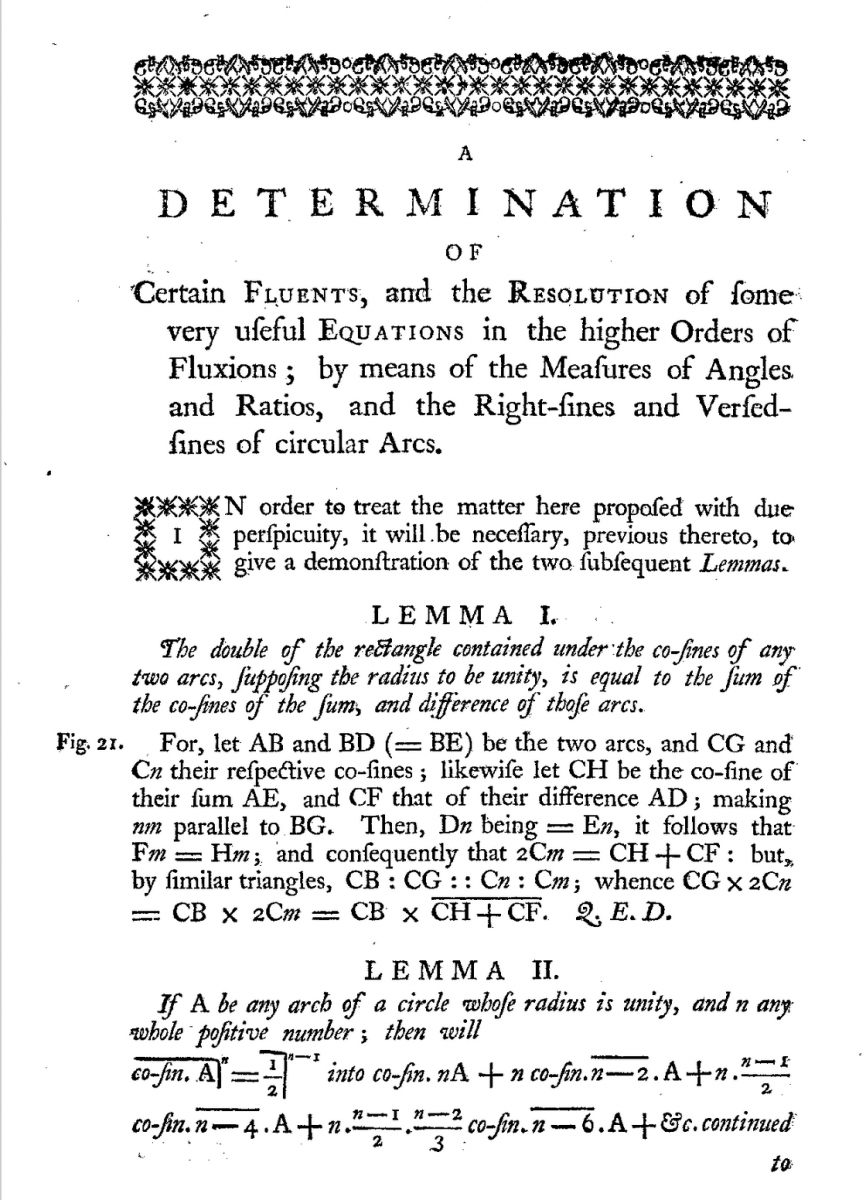- About MAA
- Membership
- MAA Publications
- Periodicals
- Blogs
- MAA Book Series
- MAA Press (an imprint of the AMS)
- MAA Notes
- MAA Reviews
- Mathematical Communication
- Information for Libraries
- Author Resources
- Advertise with MAA
- Meetings
- Competitions
- Programs
- Communities
- MAA Sections
- SIGMAA
- MAA Connect
- Students
- MAA Awards
- Awards Booklets
- Writing Awards
- Teaching Awards
- Service Awards
- Research Awards
- Lecture Awards
- Putnam Competition Individual and Team Winners
- D. E. Shaw Group AMC 8 Awards & Certificates
- Maryam Mirzakhani AMC 10 A Awards & Certificates
- Two Sigma AMC 10 B Awards & Certificates
- Jane Street AMC 12 A Awards & Certificates
- Akamai AMC 12 B Awards & Certificates
- High School Teachers
- News
You are here
Mathematical Treasure: Thomas Simpson's Miscellaneous Tracts
Thomas Simpson (1710–1761) was a prominent British mathematician. The son of a weaver from whom he was estranged, he studied mathematics informally and became a teacher at age 15. His first work, A New Treatise of Fluxions (1737), was self-published and solved several questions recently proposed involving infinitesimal calculus. Despite Simpson’s self-taught background, the volume contained many astronomical and mathematical applications and provided the first derivative of the sine function. Simpson is best remembered for his numerical method of integration known as “Simpson’s Rule” which is usually taught in second-semester calculus; the method itself was due to Isaac Newton, as Simpson acknowledged. In 1750 Simpson published The Doctrine and Application of Fluxions, which many consider the best work on Newton’s calculus of the 18th century. An 1805 printing of this work is in Convergence.

Thomas Simpson, Convergence Portrait Gallery.
Miscellaneous Tracts (1757) brings together different research papers done by Simpson. The first three papers deal with problems in astronomy. The fourth paper is the first appearance in print of Simpson’s important work on taking the average. This is considered a milestone in statistical inference. Simpson was the first to attempt to prove mathematically that the mean result of several observations is nearer to the truth than any single observation. According to [Stigler 1990] a key feature of his paper was that Simpson chose to focus “not on the observations themselves . . . but on the errors made in the observations, on the differences between the recorded observations and the actual position of the body being observed. . . . [This] was the critical step that was to open the door to an applicable quantification of uncertainty.” [Todhunter 1865] noted, “Simpson was the first to characterize the errors in observations as independent events, taking positive and negative values with equal probabilities, and the first to provide a mathematical expression for the probability that the error in the mean result will lie between assigned limits.” The fifth and sixth papers deal with problems using fluxions and fluents (derivatives and integrals) and algebra with reference to Newton’s Universal Arithmetic. The eighth paper contains discussions of the third and ninth parts of Newton’s Principia as they relate to mechanics and physical astronomy.

Title page of Miscellaneous Tracts, from the collection of Dr. Sid Kolpas.

Showing Advantage by Taking the Mean of a Number of Observations, GoogleBooks.

One of the papers on Fluents and Fluxions, GoogleBooks.

Reduction of Algebraic Equations by the Method of Surd Division, GoogleBooks.
References
Helfgott, Michel. “Thomas Simpson and Maxima and Minima.” Convergence 2 (2005).
O'Connor, J. J., and E. F. Robertson. "Thomas Simpson." MacTutor. February 2005. https://mathshistory.st-andrews.ac.uk/Biographies/Simpson/.
Stigler, Stephen M. The History of Statistics: The Measurement of Uncertainty before 1900. Cambridge and London: Belknap Press of Harvard University Press, 1990.
Todhunter, Isaac. A History of the Mathematical Theory of Probability from the Time of Pascal to That of Laplace. Cambridge and London: Macmillian and Company, 1865.
Sidney J. Kolpas (Delaware County Community College), "Mathematical Treasure: Thomas Simpson's Miscellaneous Tracts," Convergence (December 2020)




